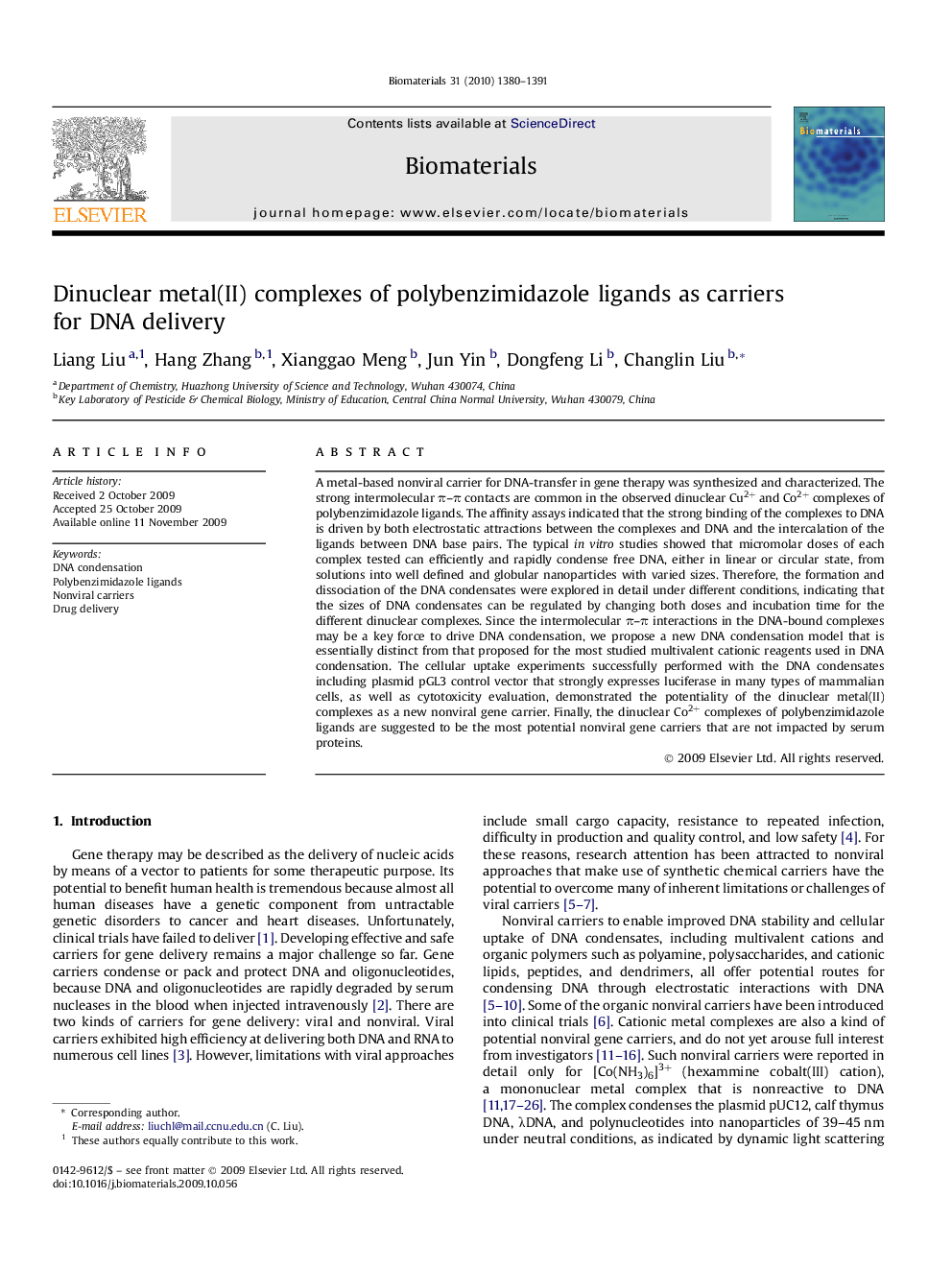| Article ID | Journal | Published Year | Pages | File Type |
|---|---|---|---|---|
| 9844 | Biomaterials | 2010 | 12 Pages |
A metal-based nonviral carrier for DNA-transfer in gene therapy was synthesized and characterized. The strong intermolecular π–π contacts are common in the observed dinuclear Cu2+ and Co2+ complexes of polybenzimidazole ligands. The affinity assays indicated that the strong binding of the complexes to DNA is driven by both electrostatic attractions between the complexes and DNA and the intercalation of the ligands between DNA base pairs. The typical in vitro studies showed that micromolar doses of each complex tested can efficiently and rapidly condense free DNA, either in linear or circular state, from solutions into well defined and globular nanoparticles with varied sizes. Therefore, the formation and dissociation of the DNA condensates were explored in detail under different conditions, indicating that the sizes of DNA condensates can be regulated by changing both doses and incubation time for the different dinuclear complexes. Since the intermolecular π–π interactions in the DNA-bound complexes may be a key force to drive DNA condensation, we propose a new DNA condensation model that is essentially distinct from that proposed for the most studied multivalent cationic reagents used in DNA condensation. The cellular uptake experiments successfully performed with the DNA condensates including plasmid pGL3 control vector that strongly expresses luciferase in many types of mammalian cells, as well as cytotoxicity evaluation, demonstrated the potentiality of the dinuclear metal(II) complexes as a new nonviral gene carrier. Finally, the dinuclear Co2+ complexes of polybenzimidazole ligands are suggested to be the most potential nonviral gene carriers that are not impacted by serum proteins.
